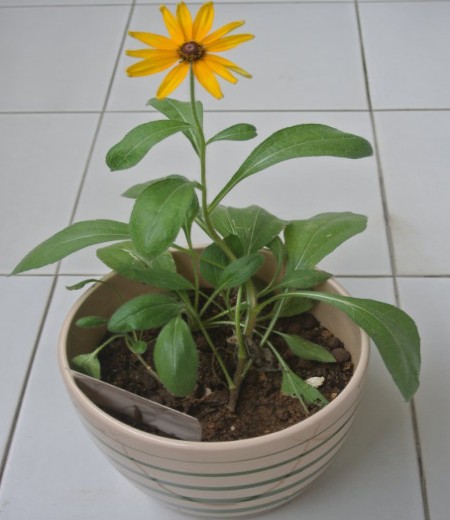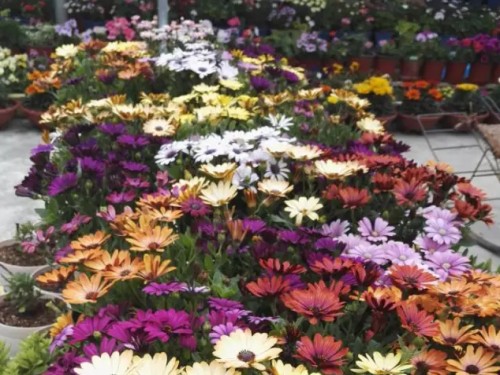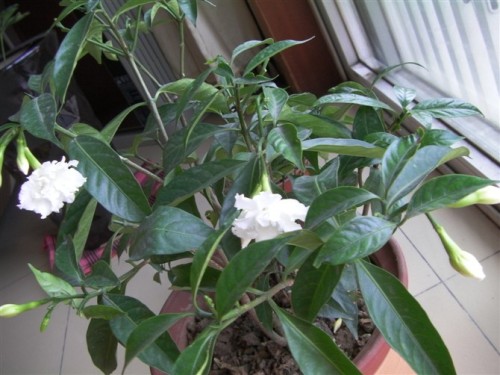Culture methods of Chrysanthemum morifolium
Black-hearted chrysanthemum, full name: black-hearted golden chrysanthemum (Rudbeckia hirta L.) Compositae, Chrysanthemum, herbs born in 2012. The heart of the flower is raised, purple-brown, and the peripheral petaloid florets are golden yellow. Florescence from early summer to frost. The cultivated varieties have tung brown, chestnut brown, double and semidouble types. The flower heart has olive green "Irish eyes" and tetraploid inflorescences up to 15 cm in diameter. In addition to yellow, there are seasonal red flowers and two colors. Native to the eastern United States. Cold tolerance is not strong, central China can still be sown in autumn, open field overwintering, can also be used as cut flowers.

The following is to introduce the culture methods of black-hearted chrysanthemum:
Soil: 5 the soil with loose and aerated sand loam is better, and the soil with poor aggregate structure can not be used, which leads to soil adhesion, consolidation and poor drainage, and the cultivated flowers are prone to root rot, leaves yellowing, and even dry death. Apply enough base fertilizer. Black chrysanthemum has strong adaptability and has no special requirements for soil, but it is suitable for cultivation in loose and fertile sandy loam with drainage and ventilation. Black chrysanthemum is often planted in the ground.
Light: like the sunny environment. Winter light should be enhanced due to lack of light, summer light is too strong and appropriate shading, and through shading and cooling, to prevent dormancy caused by high temperature. The black-hearted chrysanthemum likes the sunny growing environment, and there should be sufficient light during the growing period of the black-hearted chrysanthemum, while the summer light is strong, so the black-hearted chrysanthemum should be shaded and cooled down to avoid dormancy caused by the high temperature. In winter, due to low temperature and little sunshine, in order to prevent black chrysanthemum from affecting its growth due to lack of light and low temperature, it should be maintained indoors in the sunny place, and pay attention to heat preservation.
Temperature: black chrysanthemum likes warm, well-ventilated cultivation environment, not cold-resistant. The optimum temperature for germination of Chrysanthemum morifolium is 21 ℃-30 ℃, and it can be sown in spring, summer and autumn. The suitable temperature for the growth of Chrysanthemum morifolium is 10 ℃-30 ℃, which should not exceed 26 ℃ in daytime and 10-15 ℃ at night. Only at the right temperature can the black chrysanthemum continue to grow and blossom without dormancy. The optimum temperature during the plant growing period is 20-25 degrees, no more than 26 degrees during the day and more than 10 degrees at night. During the flowering period, summer should be properly shaded to keep the flowers gorgeous.
Watering: newly planted seedlings should properly control water squatting seedlings, after the seedling stage, adequate water supply to promote growth; flowering irrigation, do not make the center of the leaves drill water, causing flower bud rot. Pay attention to prevent poor drainage and root rot.
Fertilization: to be planted when the leaves grow to 6-8, fertilize once a month with a small amount of nitrogen, phosphorus and potassium fertilizer, apply more phosphorus and potassium fertilizer before flowering, be careful not to use nitrogen fertilizer. Black-hearted chrysanthemum does not have strict requirements for fertilizer and water, and when it generally grows well, it only needs to give appropriate nitrogen, phosphorus and potassium fertilizer for topdressing, and watering the black-hearted chrysanthemum needs to grasp the principle of seeing dry and wet, so that the flowers are more beautiful.
Pruning: when the leaves of Chrysanthemum morifolium grow too dense, the old and diseased leaves of the outer layer of the plant should be removed in time, so as to improve its lighting and ventilation conditions, so as to reduce the occurrence of diseases and insect pests and the consumption of nutrients. At the same time, it is more conducive to the development and growth of new leaves and flower buds, and increase its yield. When the black-hearted chrysanthemum is over, some rotten branches and leaves should be cut off in time to promote its regeneration and flowering. For black chrysanthemum for cut flowers, coring can be carried out appropriately to prolong its florescence. For some perennial plants, it is necessary to force the split, so as not to affect the growth and flowering.
Diseases and insect pests: in the process of cultivating black-hearted chrysanthemum, we should pay attention to drainage and ventilation, so as not to cause root rot of black-hearted chrysanthemum.
Time: 2019-06-01 Click:
- Prev

Cultivation method of blue chrysanthemum
Blue chrysanthemum is a beautiful ornamental plants, she alias African daisies, large flowers blue chrysanthemum. South African origin, not cold. Avoid hot, sunny environment, suitable for good drainage soil. Blue chrysanthemum rich in color, white, lavender, purple and other colors, can be used for flower border, or cut flowers do
- Next

Culture method of potted Bermuda
Gouya flowers have dense branches and leaves, compact plant type, pure white flowers, elegant and simple flowers, long flowering period, and suitable for hedgerows, flower diameters or large potted plants. The green leaves of this flower are green, and the flowers are crystal white and fragrant and handsome. It is an excellent potted flower. [soil] the dog tooth flower likes to be warm and humid.
Related
- Fuxing push coffee new agricultural production and marketing class: lack of small-scale processing plants
- Jujube rice field leisure farm deep ploughing Yilan for five years to create a space for organic food and play
- Nongyu Farm-A trial of organic papaya for brave women with advanced technology
- Four points for attention in the prevention and control of diseases and insect pests of edible fungi
- How to add nutrient solution to Edible Fungi
- Is there any good way to control edible fungus mites?
- Open Inoculation Technology of Edible Fungi
- Is there any clever way to use fertilizer for edible fungus in winter?
- What agents are used to kill the pathogens of edible fungi in the mushroom shed?
- Rapid drying of Edible Fungi

